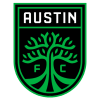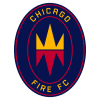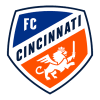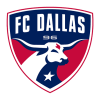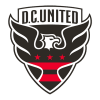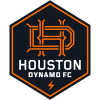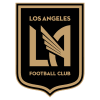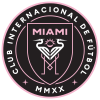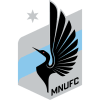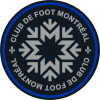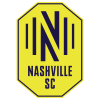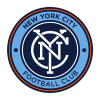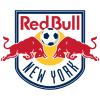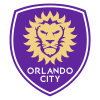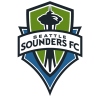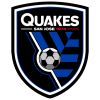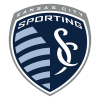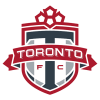We're jugging regular-season MLS coverage with Gold Cup coverage, and given that workload, I simply didn't have the bandwidth to do my usual Sunday column.
In lieu of that, I’m gonna shotgun-blast some takes on the good and the bad of what we’ve seen this year from each and every MLS team. All 27 clubs are a hair past one-third done with the 2021 season!
We’ll go alphabetically:
The Good: Brooks Lennon’s season has really flown under the radar. That should not be the case, because the kid is balling.
Lennon has been more than just “comfortable” as a right wingback in Gabriel Heinze’s 3-4-2-1; he has been a weapon. He has a pure attacker’s instincts, an engine that doesn’t quit and is one of the best crossers in the league, so it’s the perfect home for him.
RSL had tried to convert him to an overlapping fullback a couple of years ago but it didn’t quite take -- Lennon had a propensity for pushing too far forward and leaving space in behind. That is much less of an issue with three center backs behind him, and I think he’s inarguably been Atlanta’s best attacking weapon this year.
The Bad: The right wingback has been Atlanta’s best attacking weapon this year.
Basically nobody else on this roster, other than Brad Guzan, is playing well. The Five Stripes are down near the bottom of the table and have scored twice in the past five games. As of this writing, Heinze is already on the hot seat, and it wouldn’t shock me if he was in search of employment by the time I finished this column.
EDIT: Heinze was relieved of his duties while I was writing the San Jose blurb. Interesting timing! Anyway, you come at the king, you best not miss.
The Good: The system works! When they’re healthy -- or close to it -- Austin play some of the prettiest soccer in the league, and it’s largely been effective. They’re not on an “Atlanta 2017” or “LAFC 2018” pace or anything, but they're clearly one of the better-drilled expansion sides to have come into the league over the past 15 years, and it wouldn’t be particularly surprising if they made the playoffs.
The above has been undergirded by Best XI-caliber seasons from goalkeeper Brad Stuver and d-mid Alex Ring. Sporting director Claudio Reyna’s NYCFC roots paid dividends there.
The Bad: There were two areas of concern on the roster that literally everyone identified heading into the season: center back and center forward.
The center back corps have just barely held on (they should all chip in to buy something nice for Stuver, who has been other-worldly thus far in 2021), even as they’ve battled injuries and the long road trip and other, typical expansion club things. I would say that their overall performance is trending upwards.
Not so for the center forwards. Danny Hoesen was ineffective and is now injured. That’s strike one. Aaron Schoenfeld has just been injured. Strike two. Jon Gallagher, meanwhile, has been much, much better on the wing, which means that over the past couple of months head coach Josh Wolff has been using DP winger Cecilio Dominguez as the team’s primary center forward (as a false 9). Strike three.
Austin have been shut out in seven of their past nine games. Much of their roster build over the winter and into the spring was admirable, but I’m still scratching my head at the fact that they entered the season with zero MLS-caliber No. 9s.
They’ve already done a bit of shopping, bringing in young Senegalese forward Moussa Djitte. Given Djitte’s spotty track record in Ligue 2, it feels like they’re going to have to go bigger in order to get the type of production they need.
The Good: Ignacio Aliseda was a Young DP bust last year, with just one goal and two assists in about 1,400 minutes. And then he missed the first part of 2021 and it seemed like… well, it didn’t seem good.
Since returning in late May, Aliseda’s been productive with three goals, one assist and some promising underlying numbers. He’s not exactly Prime Vela out there and it still looks unlikely that he’ll live up to that DP tag, but it doesn’t seem like he’s destined to be a complete bust.
The Bad: The Fire had a two-game winning streak in early July, one in which they played some pretty good soccer. Everyone wanted to know if they could keep it going.
My answer was that they could and would not, because a two-game stretch in which they avoided catastrophic defensive errors was a blip, not the new normal. Chicago have tanked each of their last three seasons by being unable to do the most basic things right along the backline.
And so here’s how they opened Saturday night’s 5-1 loss at Nashville:
This is who the Fire are and who they have been since 2018.
The Good: Cincy’s massive offseason shopping spree -- over $20 million, according to reports -- has provided a measurable boost. Their points per game is up over 40% year-over-year, which is just a massive improvement. Big-money signings like Luciano Acosta and Geoff Cameron have each had moments in which they’ve shown their talent, and done so to the point that Cincy aren’t just getting run off the field most nights.
Jaap Stam is also getting more out of holdovers like Allan Cruz, Yuya Kubo and Alvaro Barreal than he did last year.
The Bad: That 40% increase in PPG brings them all the way up to a whopping 1 point per game. They’re on 12 points through 12 games, and while they pretty clearly seem too good to take home a third-straight Wooden Spoon, there’s not much to suggest they’re good enough to push into the playoff race for real.
As Saturday night’s devastating 5-4 loss in Montréal showed, the defense entirely falls apart without Cameron. Given the amount of three-game-weeks for the rest of the year -- there’s lots! -- a huge chunk of Cincy’s outlook rests on the legs of the 36-year-old veteran holding up through the heat of the summer.
The Good: For the past few years, it felt like the Rapids would get pumped if Lalas Abubakar wasn’t in the lineup. The big Ghanaian has been one of the more underrated center backs in the league for a while, and so it was worrying when he started the year on the injured list.
But the Rapids, it turned out, were mostly fine. They had one really bad performance against Austin in Week 2, but other than that, no matter the formation or the personnel Robin Fraser has tossed out there, they’ve been pretty damn tough to break down and capable of grinding out points even when the attack isn’t clicking. This is a pretty big change -- a pretty big improvement.
It’s also something close to a textbook linear improvement, right? The Rapids played well under Fraser in 2019 but just missed the playoffs. They played better in 2020, made the playoffs and then got thrashed as their naivete showed.
This year, they don’t look anything like a team that’s going to get thrashed at almost any point. They have added experience and know-how on top of talent.
The Bad: While the mixing-and-matching of personnel and formations has given Colorado different ways to collect points, it’s also robbed them of any chance to build attacking chemistry and momentum. They simply aren’t as dynamic going forward as they were last season or during the second half of 2019, and that’s how you end up with results like Saturday’s disappointing 1-1 home draw against San Jose.
They're down in the bottom third of the league across basically every attacking metric. They still lack the type of No. 9 who can just go out there and win you a few games on his own. Their margins are thin right now, and their ceiling is low.
Maybe that changes after the Gold Cup when they get all their pieces back, but maybe not.
The Good: Lucas Zelarayan scored his fourth direct free-kick goal of the year on Saturday night, the decider in a 2-1 win over visiting NYCFC. The single-season record is six, set by Sebastian Giovinco in 2017.
Zelarayan is that dude any time he’s standing over a dead ball, an apex-level matchwinner of historical proportions. We’re talking Beckham, Giovinco and Zelarayan. That's the entirety of this tier of direct free-kick artists in league annals.
It's a very good thing when your best player can repeatedly rescue results for you like that.
The Bad: It's a very bad thing when you have to repeatedly rely upon your best player to rescue results for you like that. Giovinco was godly on restarts in 2017, and TFC won the treble. In 2018 he went 1-for-45 on direct free kicks and that was one of the bigger reasons the Reds missed the playoffs.
The Crew have had a bunch of injuries and international absences this year, but they simply need to start playing better. Right now they’re dead last in team-wide xG (11.04) and second-to-last in xA (7.17), as per Opta. They have looked nothing like the side that stormed through the playoffs last autumn, and if the well suddenly runs dry on Zelarayan’s free kicks, they'll be in some trouble.
The Good: Ricardo Pepi has sure looked the part of a high-level goalscoring No. 9 in his few hundred minutes there this season. He should play there more.
Getting $4 million and add-ons from a Serie A side for Tanner Tessmann, a 19-year-old fringe starter (though he obviously has potential to be much more than that) with fewer than 2,000 MLS minutes on his résumé? That’s a really, really good bit of business.
The Bad: Say it with me: Dallas’ high-priced imports have underperformed and underdelivered. DP center forward Franco Jara has one open-play goal all year and put in another anonymous performance on Saturday night in Portland, while attackers Andres Ricaurte and Jader Obrian have fallen out of the XI. Freddy Vargas has fallen out of the gameday rotation entirely, and it’s hard to say it’s been unearned.
Compounding this is that the defense is now breaking down. Matt Hedges has been hurt for a big chunk of the season and there is simply no replacing him. It turns out that there might’ve been no replacing Reto Ziegler, either, as Jose Martinez and Bressan have each STRUGGLED.
Dallas are dead last in the West. It’s bad.
The Good: LosadaBall is a real thing and it works! D.C. United are among the league leaders in all relevant pressing metrics, as per Second Spectrum, and are among the highest-tempo and most direct teams in the league. They almost never allow their opponents to control the game, which is a very good thing and a very different thing than what the previous decade in D.C. had been.
Plus Losada is getting individual improvement from basically the entire roster. That includes the kids, as the most sophisticated analysts are all falling in love with left wingback Kevin Paredes in particular:
I, too, am a big-time Kevin Paredes guy.
D.C. United are fun.
The Bad: They’re not quite good, though, are they? There is a distinct lack of final-third quality -- the injury to Edison Flores probably has something to do with that -- which has cost them points throughout the season.
Injuries like Flores' might be baked into Losada’s overcaffeinated approach, as United have had more than their share. It started in preseason and, though it’s gotten better, the rash of soft-tissue injures has nonetheless continued into the summer.
The other persistent issue that seems baked into Losada’s approach is the propensity for late collapses. United’s collective tank has tended to hit “empty” around the 70th minute. There have been a lot of late breakdowns and a lot of late, dropped points.
It’s hard to imagine that issue going away as the schedule gets compressed through the hottest months of the year.
The Good: Houston play with absolute commitment. They're not quite a pressing juggernaut, but there’s no doubt that “counter-press and play with energy” is their team identity and that Tab Ramos has gotten a ton of buy-in. The front line of Fafa Picault, Maxi Urruti and Tyler Pasher is relentless, and one of the most miserable in the league to try to play through.
The Bad: There are two big issues:
- As miserable as it is trying to play through that initial line of pressure, things get a lot easier once/if you manage it. The Dynamo struggle to get pressure to the ball through midfield and have the very worst xG against in the league. Only some heroic goalkeeping from Marko Maric has kept them in the playoff hunt.
- With Ramos having mostly exiled Darwin Quintero, there are no individual match-winners in this side. Urruti and Picault are notoriously streaky, while Pasher is a USL lifer making good on his first MLS look. To put it bluntly: there is a talent deficit in most games.
It’s hard to make up for that week after week, and judging by Houston’s results over the past two months, the Dynamo might have hit the wall in mid-May.
The Good: It’s not just Chicharito, but let’s start with Chicharito: he has been spectacular. He is finding seams, dragging opposing backlines all over the defensive third and forcing everyone he plays against to be reactive. This is the Chicharito who scored 20 goals for Bayer Leverkusen a few years ago, or the one who became a fan favorite with Manchester United and, obviously, El Tri.
Every time he’s been on the field this year he’s put on a clinic in how you don’t always need to be touching the ball to have a massive impact on the game, the walking embodiment of the 7:1 principle (short version: at the highest levels of the game, attacking players tend to make seven off-ball runs per pass received). He puts so much pressure on opposing teams off the ball, and as a result, his teammates have been able to do much, much more on it.
Which is the other thing: the Galaxy’s midfielders and fullbacks, young and old, have been very good. The front office collected a lot of guys who are super comfortable with the ball on their foot, and actually, I really want to show this Sacha Kljestan pass because it’s brilliant:
The collection of talent fits how head coach Greg Vanney wants to play. It’s been really, really pretty.
The Bad: The defense is still a work in progress, as was evident in Saturday’s 2-1 loss at Vancouver. New goalkeeper Jonathan Bond has been a godsend, but as he cools off (and it should be noted that he is, in fact, cooling off), LA’s margins will get thinner.
If those margins continue to thin out and Chicharito continues to be on the sidelines nursing an injury, this summer will be much more about “treading water” than it will be about putting some distance between themselves and the playoff line.
The Good: LAFC’s demise was greatly exaggerated. They are currently one of the hottest teams in the league following Saturday night’s win over RSL, having won three in a row and four of five, and have climbed up to fifth in the West.
In the process, Bob Bradley has shown flexibility in how he uses his lineup -- there have been all kinds of different shapes, including Saturday’s lopsided diamond with dual false 9s -- and his tactical approach. This year’s version of LAFC is much more content to absorb pressure and hit on the counter if that’s what the situation calls for.
The Bad: LAFC have conceded just 13 goals in 13 games, but a lot of those have come late. Meltdowns against Houston, the Galaxy and NYCFC were all self-inflicted, and they're the kind of dropped points that can cost you a home playoff game or even a trophy.
But the bigger issue is this:
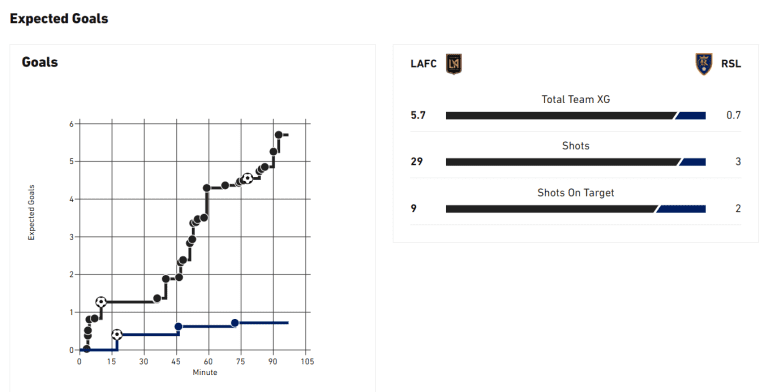
They have repeatedly dominated games this year and repeatedly failed to turn the high-level chances they’re creating into goals. The win over RSL was absurd -- LAFC took 29 shots!!! Twenty of them were from inside the box!!!
It was a bit of an outlier, but not entirely so. Thankfully for them, Carlos Vela was able to rescue the win with a late golazo this time.
This time. It can’t always be Charlie Candle with the late golazo, though. They need someone to turn all those high-quality chances they create into goals, and none of their No. 9s have been up to the job (thus far).
It's obvious that LAFC need to make an addition of that sort this summer. What is not obvious is how they can go about doing so, given the state of the roster and the fact that all three DP slots are occupied. Though they're nearing a $2.5 million deal for Colombian forward Cristian Arango, per MLSsoccer.com's Tom Bogert.
The Good: I feel like when Gonzalo Higuain’s been healthy, available and on the field, he’s mostly looked good and committed. He’s got 5g/1a in 700 minutes this year, which is a pretty healthy ROI for any forward, if not quite the level of dominance expected given his name and his price tag.
The Bad: Pretty much everything else. The attack rates as one of the worst in the league; the other DPs -- Blaise Matuidi and Rodolfo Pizarro -- have not lived up to their billing at all; the young players on the roster have shown no signs of improvement; this winter’s signings haven’t helped; and last year’s breakout player, Lewis Morgan, has regressed to the point of invisibility.
As of publication, Inter Miami are dead last in the Wooden Spoon race. They're odds-on favorites to walk away with that ignominious prize at the end of the year.
Worse is that "how are Inter handling their roster rebuild and allocation cash deduction?" seems certain to be the most relevant topic with this team for literal years to come.
The Good: While Emanuel Reynoso’s boxscore stats aren’t as gaudy as last year and the underlying numbers have all dropped off a bit from what was frankly an MVP-caliber 900 minutes to close out 2020, what he’s doing in 2021 is still elite. He’s up among the league leaders in chances created and xA/90, is spending a ton of time on the ball, drawing a ton of fouls, serving in exquisite set pieces and generally looking the part of one of the league’s best No. 10s.
Nnow that Minnesota’s attack is mostly healthy and whole, his numbers across the board are starting to pick up. And yes, his secondary assist on the game-winner in Sunday’s 1-0 win over the Sounders was gorgeous
The Bad: That four-game losing streak to start the season was really bad, even if it wasn’t necessarily indicative of what was to come.
What's worse is that the Loons don’t really have any answers if Reynoso isn’t out there conducting things for them. They’re not precisely a one-man show, but it’s pretty close.
The Good: CF Montréal have been maybe the most pleasant surprise in the league, and they've done it by getting five or 10 percent better across the board at almost everything. Part of that is personnel, as offseason acquisitions like Kamal Miller, Kiki Struna and Djordje Mihailovic have all provided real high-end value.
Part of it is consistency, as new head coach Wilfried Nancy has instituted a 3-5-2 that puts most of his players -- including and especially DP defensive midfielder Victor Wanyama -- in their natural positions, which is basically saying “he’s putting his players into spots where they’re more likely to succeed than to fail, and is asking them to do the same things week after week, which breeds consistency.”
All that, when summed together, leads to both team and individual improvement. Perhaps nobody has benefitted more than young center forward Mason Toye, who is finally making good on his considerable potential:
That’s a poacher’s goal, and Toye didn’t always find those. He could score golazos, but every high-level No. 9 in the world is built on high-level chances and one-touch finishes in the box.
Well, that’s who Toye has become, and you can see it in his xG per shot.
- 2019 – 0.147
- 2020 – 0.139
- 2021 – 0.218 (!!!)
That is a MASSIVE year-over-year jump and is "Raul Ruidiaz territory" in terms of value per shot. It explains how Toye is the leading domestic goalscorer in MLS this year, and how he’s tied for eighth in the league in goals despite having played 300 fewer minutes than anybody else on that list.
This sure feels like a breakout season for the 22-year-old. Let’s hope, for his sake and for CFM's, that he stays healthy and keeps it going.
And it needs to be said that between Toye, Miller and Mihailovic, the bold decision by Montreal’s front office to shop mostly for bargains in MLS instead of spending $20 million on imports sure looks savvy. They bet that domestic players are undervalued and that Nancy (and his staff) could develop them, and that might've been the single best wager any club made this offseason.
The Bad: Losses at Vancouver and Atlanta, and “home” to Cincy sure look bad on the old form chart, but they’re balanced out by solid-to-excellent wins elsewhere.
The truth is that almost nothing has been “bad” about Montreal’s season, even if the underlying numbers still don’t love them and even if the backline and goalkeeper corps are still prone to misadventures of the sort that produced Cincy’s offensive explosion in what eventually became last Saturday night’s remarkable 5-4 CFM win at Stade Saputo.
The Good: Saturday night was really good! Hany Mukhtar scored the fastest goal in league history from the opening whistle and Nashville closed out their five-game homestand with a commanding 5-1 win over the hapless Fire.
Mukhtar has come alive recently, finally looking like a DP. He’s been playing more as a free-roaming attacker/second forward in Nashville’s new 3-5-2 than as a true midfield string-puller, and it suits him. It’s certainly suited the Nashville attack as well.
The Bad: It hasn’t helped the Nashville defense, though. They're still much softer and more mistake-prone than they were in 2020, having developed and maintained a habit of conceding bad early goals and then having to fight back to rescue a point (or sometimes points).
That leaves their place in the standings as somewhat misleading, as are the underlying numbers that currently love them. Nashville have played 10 of their 13 games thus far at home, and have spent the majority of them clawing back from early deficits. That’s a good recipe for putting up big attacking numbers.
It’s also a good recipe for dropping valuable points. They’re just 5-0-5 at home, have the toughest remaining schedule in the entire league, and just five points separating them from the playoff line.
The Good: Just about everything, but mostly Carles Gil. He is, at worst, second in the MVP discussion and the sort of two-way No. 10 that any smart manager would build his team around.
The other DPs -- forwards Gustavo Bou and Adam Buksa -- have both been worth their tags this year, and d-mid Matt Polster remains criminally underrated, as do the fullbacks.
The Bad: New England's defense has not necessarily been “bad," but they've had to lean more heavily on Matt Turner than I think Bruce Arena would like to see. And of course, they got a reminder of what can happen with a sub-elite goalkeeper back there in the loss to Toronto FC before the Gold Cup break.
I’m going to say roughly the same thing about the wingers. Not “bad” per se -- far from it, actually -- but not as productive as they need to be if they’re going to make the 4-2-3-1 work at a high level.
Tajon Buchanan seems to be turning the corner for Canada in terms of filling the boxscore. If he can bring that with him back to MLS, the Revs are probably solid favorites to win the East.
The Good: By the eye test and the underlying numbers, NYCFC have spent most of the season playing some fantastic soccer. I think they have probably been my favorite team to watch this year.
On top of that, City Football Group opened the checkbook and made the kinds of big-money, high-potential signings that supporters have been clamoring for for years. Thiago Andrade is, thus far, the best of them, but Talles Magno and Santiago Rodriguez are loaded with promise as well.
This team should end up being really, really good.
The Bad: Check the standings, though, and the form guide. They are not.
NYCFC are just above the playoff line at 5-5-2 and have struggled mightily to turn their overall dominance into scoreboard dominance.
Taty Castellanos is the biggest culprit. He started the season with four goals in four games and has gone goalless in his subsequent eight, including missed PKs, tap-ins and everything else under the sun. Castellanos’s movement is superb, his defense is elite and his linkup play is very, very good. He works hard and finds a ton of chances, and the underlying numbers love him. The underlying numbers are worth trusting because usually, in the long run, they are right -- guys who find high-value chances tend to start putting the ball in the net on the regular.
I am going to continue to trust the underlying numbers. But it’s worth remembering that the underlying numbers loved Cristian Colman, too.
The Good: Gerhard Struber appears to have been worth the money and toil to get him to Harrison. This Red Bulls team plays with conviction and damn near absolute clarity of purpose, and because of that, nearly everybody on the roster is playing better than we’ve seen from that over the past two years.
That obviously includes young stars like Cristian Casseres Jr. and Caden Clark, but also holdovers like Sean Davis and Kyle Duncan. When almost everyone starts playing better, all at once, the coach has probably done a really good job.
The Bad: Struber almost always trots the Red Bulls out in a 4-4-2 diamond, and the vast majority of minutes at forward have been taken up by five guys: Newcomers Fabio and Patryk Klimala (a DP), holdovers Danny Royer and Tom Barlow, and the since-traded Brian White. Between them, they have about 2200 minutes and… four total goals.
RBNY are eighth in the playoff race in the East. It’s hard to imagine them climbing and staying above the line unless either Fabio or Klimala get consistently goal-dangerous in a hurry.
The Good: The Lions have survived injuries, absences and some underperformances here and there to stick around and plant themselves solidly into the Eastern Conference race.
Because the attack has been hit-and-miss this has largely been due to the defense, which has been superb (or close to it) throughout. Center back Antonio Carlos and goalkeeper Pedro Gallese, in particular, are among the very best in the league at their spots.
And up front, while everything else has been in various stages of disrepair, Nani has mostly been excellent. “Elite defense + one match-winner” isn’t sustainable over the course of a full season, but it’s been a good formula for now while Oscar Pareja juggles the lineup.
The Bad: I keep thinking back to how good Orlando City looked at the MLS is Back Tournament last year, and mentally I have in my head that they’re going to be back to that when they’re whole. But… what if they never get whole? Left back Joao Moutinho hasn’t been the same since his injury and right back Ruan can’t stay fit -- those guys were integral parts of last summer’s run to the final. Attacking-mid Mauricio Pereyra, meanwhile, has clearly lost a step this year, and d-mid Uri Rosell has barely played.
So I don’t think it’s fair to say that Pareja’s repairing last year’s team and trying to get them back to what they were. I think that because of injuries and the incipient transfer of forward Daryl Dike, he’s having to craft a new team, and it’s an open question as to whether or not the ceiling’s going to be as high.
The Good: I’m not going to say “everything” because that’d be an exaggeration, but I don’t think even the most optimistic Philly fan* would’ve predicted second in the East and a spot in the Concacaf Champions League semifinals at this point in the season. Not after selling $15 million worth of Best XI Homegrowns and losing a number of other starters/stars to injury, international call-ups and suspensions (stop collecting so many yellows, Jose Martinez).
(*) That was a rhetorical trick because, in my experience, there's no such thing as an optimistic Philly fan in any sport.
And yet here they are! The Union haven’t really been great, and they don’t dominate games. But they're probably the best in the league at understanding where the game-changing moments are and dominating those.
It needs to be said that all of this is built upon having one of the league’s best goalkeepers, one of the league’s best center-back pairings, and one of the league’s best defensive midfield rotations. So it’s not like the cupboard’s bare, but damn… what the Union have done as a club this season is impressive.
The Bad: Starting forwards Kacper Przybylko and Sergio Santos have combined for just seven goals on the season. That number was just five before Saturday’s 2-1 win over D.C. United.
I think it’s fair to say that both guys were much more impressive in CCL play than they have been in league play this season, and given the history of MLS teams juggling multiple competitions, that’s not entirely unexpected. It's unfair to call it “bad,” but points have been dropped here and there because the front line hasn’t really produced like they need to.
I'll admit that I still don't think this pairing is good enough to win the Union a trophy in a knockout-style competition like the CCL or playoffs. Sure, they'll grind through the regular season, but when it's win or go home, I'm just not convinced they can hit that level.
The Good: Portland have mostly survived. Sebastian Blanco has been out basically the entire year, both Diego Valeri and Diego Chara are showing their age, Yimmi Chara missed a month at Copa America, Andy Polo is out for the season and Jaroslaw Niezgoda still hasn’t returned from last year’s ACL tear.
Eryk Williamson is on international duty and Jeremy Ebobisse started the year hurt. Larrys Mabiala missed time, as did basically every goalkeeper on the roster.
And the Timbers didn’t collapse. They’re sixth in the West on a not-great 1.33 PPG, but I don’t think there are many teams in the league who could’ve lost as many key contributors and continued to hang around like Portland have.
So now if Blanco comes back and hits his previous level right away, they’re in a very good position to push way up the standings.
The Bad: If he doesn’t, though? Blanco looked spry in his nine-minute cameo during Portland’s 1-0 win over Dallas on Saturday night, but he’s 33 and this is already his second comeback of the year -- he played twice in mid-June, then disappeared for a month. There’s no guarantee that he’s going to be the guy he was last year.
Between that and both Diegos finally starting to look their age a little bit, it feels like Portland’s ceiling isn’t nearly as high as it seemed to be entering the year.
The Good: They found themselves a bargain in forward Rubio Rubin and a young, charismatic star in homegrown goalkeeper David Ochoa. And Damir Kreilach has been excellent as a sort of raumdeuter in what is more or less a 4-4-1-1.
The defense has been very good with just 14 goals allowed in 12 games (Ochoa’s a big part of this). The underlying numbers mostly agreed with that up until Saturday night’s shellacking at LAFC, which was an outlier of a performance.
All-in-all, it’s added up to a team that’s just below the playoff line and seems to have potential for more than that.
The Bad: They're doing all of this while getting almost nothing from their wingers, including and especially DP captain Albert Rusnak.
- His stats this year: 2g/2a in about 1,100 minutes.
- His stats last year: 3g/2a in about 1,300 minutes.
It seems likely that this is just who he is. If that’s the case, then the ceiling on what RSL can be this season isn’t particularly high -- in fact, they might be brushing against it right now at eighth in the West.
The Good: Literally everything. Spreadsheet merchants will point out that Seattle’s underlying numbers aren’t nearly as good as their boxscore numbers and place in the standings (they’re still first, even after Sunday’s 1-0 loss at Minnesota), but I’ll point out that they’ve done all this without Nicolas Lodeiro and Jordan Morris from the start of the year, and have subsequently suffered the loss of various and sundry other starters/stars due to injury and international call-ups.
All this has done is prove the club’s depth and cultural resilience. Brian Schmetzer has changed formation, gone down the depth chart, played the kids, changed formation again, adjusted the line of confrontation, etc etc etc – and it just keeps working.
They set the damn record for games unbeaten (13) to start a season. It’s not always pretty, but who cares?
The Bad: Nothing about this Sounders season has been bad other than the injuries.
The Good: Young forward Cade Cowell picked up another assist on Saturday night in the 1-1 draw at Colorado. He now has 4g/4a in 880 minutes, and while that’s not exactly a Golden Boot or assist king pace, the list of teenagers with a goal contribution every ~120 minutes in MLS history is very, very short.
Cowell’s doing this at 17, and these aren’t run-of-the-mill assists. I still can’t get over this pass:
A sprinting, outside-of-the-boot 40-yard through-ball that eliminates the entire defense? That is an unreal look.
The Bad: That goal you see DP winger Cristian Espinoza scoring up there? That’s his only goal of the season. Two of the Quakes’ other top earners, Andy Rios and Carlos Fierro, have combined for zero goals. Javier “La Chofis” Lopez has done slightly better with three goals on the season.
It’s not enough. The Quakes are far from a big-money team, but they’ve spent millions bringing in new players over the past few years and the vast, vast majority of them have not delivered. It cost Jesse Fioranelli his job, and I think it’s safe to assume Matias Almeyda is sitting on a very warm seat at the moment as well.
And that’s the other thing: There’s plenty of film on Almeyda’s man-marking scheme now, and every Western Conference team except Austin has deep personal experience playing against it. There’s no more novelty in it, no more built-in advantage for the Quakes just because going against them is so different.
And so the Quakes are shipping almost two goals a game. Only Cincy and Toronto have been more porous.
The Good: The very best thing that has happened for Sporting this year isn’t the play of Gianluca Busio, or the fact that Daniel Salloi has finally appeased the Soccer Gods and become uncursed in front of goal. It’s that Andreu Fontas has been simply excellent in the middle of that backline.
When Fontas first started getting regular MLS minutes in 2019, he looked out of his depth athletically. Then he tore his Achilles and basically didn’t play for a year, and it seemed a safe bet that that would be that.
Obviously, that’s not the case. He looks now, at age 31 and after the most devastating injury you can have in the sport, exactly like the guy Sporting hoped they were getting when they signed him as a 28-year-old.
It is genuinely shocking, and it has been a godsend for a team that’s been incredibly vulnerable along the backline in each of the past two seasons.
The Bad: You can pick at individual results -- the loss at Houston and the home draw vs. Austin being the most obvious -- but that’s really about it. Sporting have proved to be deeper and more flexible than anybody really thought they were, to the point that it hasn’t really mattered that Johnny Russell and Gadi Kinda have both regressed a bit.
Not a lot of “bad” to find there!
The Good: I think it’s fair to say that they’ve been quite a bit better over the past 180 minutes. Four points from two games against the Revs and Orlando City is very good, even if TFC are probably disappointed that it was only a point from this weekend’s 1-1 draw with the Lions.
Picking up points has a lot to do with Alejandro Pozuelo being healthy again, and Yeferson Soteldo being in the lineup. And it’s worth pointing out that Jozy Altidore, who had TFC’s only goal this weekend, has looked good whenever he’s been available this season.
There’s a lot of talent in this roster, even if much of it is old.
The Bad: They're dead last in points per game and need to make a pretty epic run over the next 20 games to give themselves a shot at making the postseason.
The defense has been the worst in the league, both goalkeepers have been dodgy and they’re not winning the ball a ton in central midfield. Every counterattack they’ve faced all season has felt like an existential threat, but what's more worrying is how much they’ve struggled to prevent teams from creating high-quality chances against them out of simple possession.
I think there are a lot of high-scoring games in this team’s future. If not, I don’t see how they make the playoffs.
The Good: Vancouver have rather quietly collected a bunch of young, starting-caliber guys via various player acquisition devices and scattered them throughout the roster.
Caio Alexandre, one of the first U22 Initiative signings in league history? He’s very good. Michael Baldisimo, a Homegrown regista? I love him. Deiber Caicedo, another Young Money guy? You can see the talent. Javain Brown, a late first-round draft pick? He’s under the radar but should not be. Ranko Veselinovic, a once-capped Serbian international center back who Vancouver purchased outright after having him on loan last year? I think he’s quite good.
The oldest of that group is 22 and all of them are legit starters in the league. Add them to veterans like Lucas Cavallini, Cristian Dajome, Janio Bikel and Maxime Crepeau… this isn’t a title team or anything, but it really should work.
The Bad: It’s really not working, Saturday night’s nice 2-1 win over the Galaxy notwithstanding. The ‘Caps are 11th in the West with 13 points from 14 games and have the conference’s worst goal differential at -9.
Most of those young players have been in and out of the lineup while shuffling in and out of different roles. They haven't gotten a consistent run with the veterans -- it’s basically the opposite of what Wilfried Nancy has done with CF Montréal. There's little week-to-week cohesion, so it’s hard to trace a steady upward trend in team performance. That makes it hard to, you know, win soccer games.
To put a number on it: Vancouver have not had a three-game winning streak since 2017. That’s not great.



